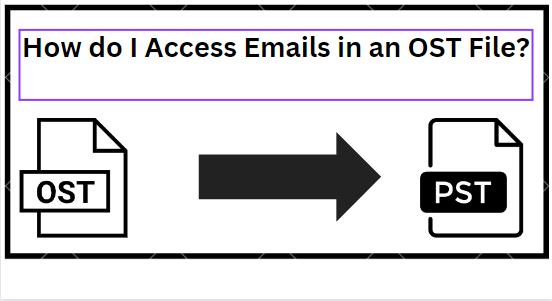Top 17 Enterprise SEO Metrics To Inform Your Reporting via @sejournal, @wburton27
Make sure you are on track to meet business goals and objectives. Here are 17 metrics to consider reporting on in enterprise-level SEO. The post Top 17 Enterprise SEO Metrics To Inform Your Reporting appeared first on Search Engine...

Measuring SEO metrics is essential for proving the value of your efforts and optimizations.
It’s the key to getting budget from existing clients and executives, landing new ones, making the business case to justify SEO spend, and keeping your current clients happy.
With a plethora of SEO platforms and point solutions on the market, here are the most important enterprise-level metrics to measure SEO performance and ensure you are on track to meet business goals and objectives.
1. ROI
We live in a changed world due to COVID.
Many brands are protective of their budgets and watch every dollar they spend on marketing.
Calculating the ROI of SEO is the best way to justify your existence, and it all starts with business goals. If you are an ecommerce brand selling printers and your goal is to grow 30% year over year, you’ll need a strategy that hits that goal.
To do this, you will need to know some information depending on how your client makes money, i.e., ecommerce, lead generation, etc., to prove the ROI.
Average order value. Conversion rates. Current rankings and traffic. SEO spend.ROI = (Organic Traffic * Conversion Rate * Avg Order Value) / Cost of SEO
Calculate Keyword Value Equation For Ecommerce Website
Revenue = Search Volume * Ranking Position Click-Through-Rate * Conversion Rate * Avg Order Value
Equation For Lead Generation Website
Revenue = Search Volume * Ranking Position Click-Through-Rate * Conversion Rate * Lead-to-Customer Rate * Customer LTV
2. Brand vs. Non-Brand Visibility
Another important metric to track is brand vs. non-brand visibility and conversions if your SEO platform has a solution for tracking performance at the keyword level.
Most websites get a lot of traffic and conversions from branded keywords.
If you show incremental growth in branded keywords by getting your client to rank number one for keywords that they did not before, you can get more revenue since branded keywords have more purchase intent.
Monitoring any increase in the number of keywords, such as non-brand keyword driving traffic, can also show that your SEO strategies are paying off, especially if you’re generating incremental sales and revenue goals for your clients.
3. Bounce Rate
Bounce rate is single-page sessions divided by all sessions, or the percentage of all sessions on your site in which users viewed only a single page.
Google Analytics tracks the number of people who visit your page and leave without viewing other pages on your site.
Bounce rate is not a ranking signal. However, it could indicate an issue with your page content, you’re not meeting user intent, or your page offers a poor user experience, etc. It could be too many ads, pop-ups, long load times, or other issues causing users to exit quickly.
Make sure you have a site offering a good user experience, great content that meets the information need, user intent, and loads quickly.
4. Backlinks And Referring Domains
Having high-quality backlinks from relevant sites is still an important ranking factor.
It is not about how many backlinks your site has; it is about the quality and relevancy of those sites linking to your site.
If you are Nike and get a lot of links from good sites related to sneakers, shoes, and apparel, it will help improve your rankings because relevance and quality are key from lower-quality sites that are not related to Nike’s products.
Another important backlink metric to track is referring domains.
Getting more high-quality links from different websites that are relevant to your domain can have a positive impact on search engine rankings.
5. Rankings
Monitoring your non-branded and branded search engine rankings is vital to see the keywords driving qualified traffic and conversions to your site.
This will help you achieve your organic search goals and see what is moving the needle in terms of performance.
SEO is all about driving qualified traffic that converts into customers.
If your rankings go down dramatically for non-branded and branded keywords that are helping your site meet KPIs, it could mean that your site had a manual action, lost some links, has a technical error, or your content does not meet user intent, for example.
6. Indexed Pages
Another important metric to monitor is the number of indexed pages.
If you add content to your blog or new category pages and it does not get indexed by Google, guess what?
You will not rank for any keywords on those pages because the content has not been indexed and crawled.
Always make sure your content is indexed by submitting new pages in your HTML and XML sitemaps, including links from your site navigation, and/or submitting content to be indexed through Google Search Console.
Always make sure you clean up any duplicated pages and have thin or outdated content.
Google loves fresh content, but duplicate, outdated, or irrelevant content can be a roadblock.
7. Impressions & CTR
Impressions are the number of times your URLs appear in search results viewed by a user but do not include paid Google Ads search impressions.
If your impressions increase, it could indicate that Google feels your content is relevant for the end user’s query.
When the URL is clicked, it will result in more traffic to your website, increasing traffic, sales, and conversions.
8. Page Speed & Core Web Vitals
Having pages that load as quickly as possible (under three seconds), with content that satisfies the information need and gives the end-user what they want quickly, provides the best user experience.
Many studies have found that a good page load time can positively impact conversions.
Another important SEO metric to measure is Core Web Vitals which focuses on user experience – loading, interactivity, and visual stability:
Largest contentful paint (LCP). First input delay (FID). Cumulative layout shift (CLS).CWV is a part of a larger set of Page Experience metrics.
It is used to improve the overall UX of the web as a ranking signal and pages with “Good” vitals are already performing well in search.
9. Crawl Errors
Crawl errors occur when a search engine tries to reach a page on your website but fails to reach it successfully with a 200-response code.
Monitoring crawl errors is important to ensure that Google can find, index, crawl and rank your content.
Crawl errors can occur because a page is blocked via robots or noindex, it no longer exists, or redirects to an alternative page.
If there is a significant increase in crawl errors, Google may decrease your search engine visibility. Make sure you’re running consistent crawls and checking Google Search Console for crawl errors.
10. Organic Traffic
Monitoring organic traffic is a vital metric to track because it shows if your SEO efforts are working and resulting in more qualified users to your client’s site month over month and year over year.
Most clients like to see traffic increases month over month or quarter over quarter. But, year-over-year comparisons give a more accurate assessment since seasonal businesses may show predictable increases and decreases around specific seasons.
The more qualified traffic organic search traffic from both mobile and desktop you can deliver to your client’s site, the likelihood that conversions and revenue will increase if you provide a good user experience across the fragmented user journey.
11. Organic Conversions
At the end of the day, SEO is all about delivering qualified traffic that converts into customers.
If your conversions increase, your organic search strategy is working, and your SEO efforts bring the right traffic to your site and result in incremental sales, leads, or downloads, you can consider it a success.
12. Organic Landing Page Metrics
Another way to look at SEO performance instead of keyword-level performance is by looking at performance at the landing page level.
Check GA or other analytics platforms and track organic sessions and other conversions metrics to see how the pages on your site are doing overtime, what pages perform well, and any gaps and opportunities.
If some of your pages are not performing as well as expected, revisit your SEO strategy and analyze why the page is not performing as well as the other money pages on the site.
Start investigating whether you are targeting the wrong keywords.
Does the page load slower than others? Does the page have any broken links?
13. Top Exit Pages
When a user comes to your landing page, the goal is to find what they are looking for and convert the visit into, for example, a sale or brochure download.
But sometimes, users can’t find what they are looking for. They may look around at other landing pages on your site and then leave without converting.
Reviewing your top exit pages can show you which pages are not performing well and where end-users exit.
If you review your analytics and see that 60% of users are leaving at a particular page that is designed to convert, it’s time to revisit your page and investigate what is going on.
14. New vs. Returning Visitors
Monitoring new versus returning visitors is a valuable metric to measure.
If you have many returning visitors, and low conversions, revisit your exit pages to see what’s preventing people from making a purchase.
A good SEO strategy targets a qualified audience and satisfies their information needs at all stages of the user journey, so they keep coming back to your site.
Home Depot does an excellent job of this by having videos and other content such as DIY content and videos that help end-users solve and diagnose problems.
15. Competitor SEO Metrics
Keeping track of your competitors is vital to learning what type of content they are creating, what landing pages are performing well, where they are gaining market share and ranking higher than you, and where they are getting links from.
Always monitor your competitors’ backlinks to find new opportunities for your client’s site and monitor their visibility to identify relevance. Focus on content gaps and find new strategies and tactics to outperform them.
16. Content Score
Having high-quality content based on intent and covering topics relevant to your content tied in with high-quality links, and marking up your content with structured data and other SEO tactics and strategies can help win the war in today’s competitive SERPs.
There are several different tools such as ClearScope, Market Muse, and Content Fusion by SEO Clarity that can score content against a defined “theme” (topical target, usually a head term).
The scoring (100-point scale) ends up being relative to the other competing content pieces that support the same target theme scored against.
In this way, SEO professionals can identify the common text-based elements to include in the copy to maximize relevance against the target theme.
17. Share Of Voice
Monitoring your share of voice can show how your brand stacks up against your top competitors in occupying valuable search real estate.
It provides insight into competitor strategies and shows who you compete with for each of your keywords and keyword groups across different lines of business and locations.
Your competitors are not always who you think they are.
Wrapping Up
Measuring important metrics from organic search can help find opportunities for improvement to drive incremental traffic and conversions, get better search engine rankings, and help you hit your business goals, objectives, and ROI.
With these metrics in hand, you can then focus on using that data to tell a compelling story for stakeholders. Check out these examples of exceptional SEO data visualizations to inspire your own reporting.
Make sure you avoid these common enterprise reporting mistakes, as well.
More resources:
Evolution Of The Web: 4 Future Enterprise SEO Considerations 7 Common Enterprise SEO Reporting Mistakes To Avoid Enterprise SEO Guide: Strategies, Tools, & MoreFeatured Image: Blue Planet Studio/Shutterstock

 MikeTyes
MikeTyes 
































